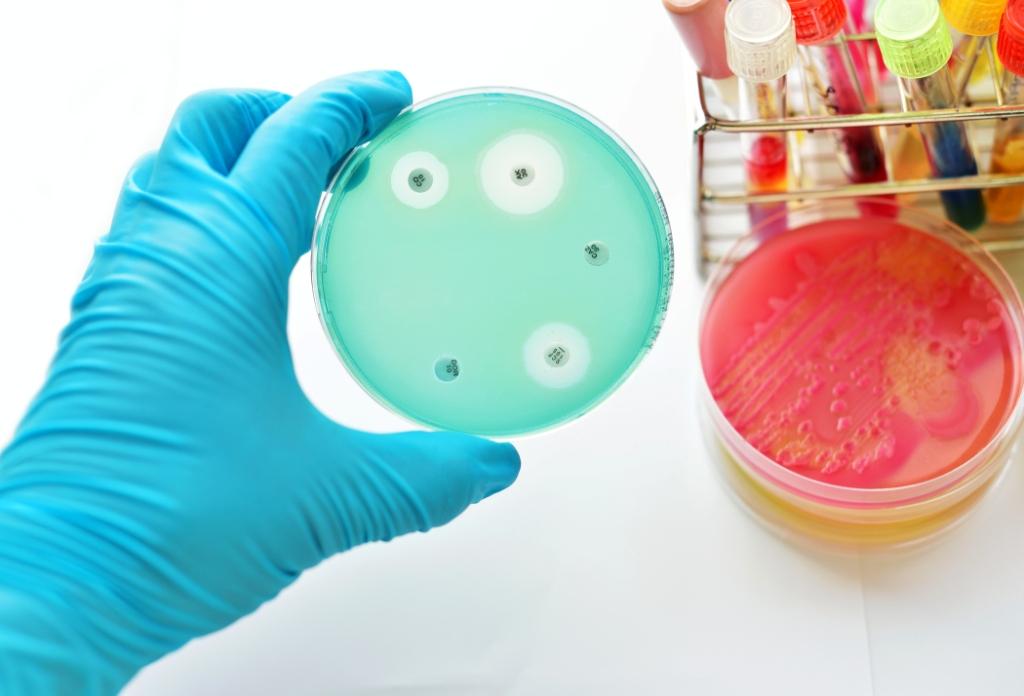



In the framework of the World Antimicrobial Awareness Week, Dr Elisabeth Erlacher-Vindel, the former Head of the Antimicrobial Resistance (AMR) and Veterinary Products Department at the World Organisation for Animal Health (OIE), gave an interview to Dr Budimir Plavsic, the OIE Regional Representative for Europe.
She provides an overview of the current AMR activities in which the OIE is involved and shares her vision for future developments in this area.
Dr Budimir Plavsic (BP): What is the state of play of antimicrobial use in the animal health sector at the global level? Has there been significant progress in this area over the past years?
Dr Elisabeth Erlacher-Vindel (EEV): To better understand how antimicrobials are used in animals at global scale, the OIE started a data collection project seven years ago. Prior to its launch, extensive discussions have been held with countries, in particular with our National Focal Points for Veterinary Products, to understand their needs and define how we could best support them.
After years of mutual engagement and collective efforts, we can be proud that more and more countries are able to provide quality data that allow to establish a trend in the use of antimicrobials in animals over the past years. According to the latest data submitted, an overall decrease of 34% was observed in antimicrobial quantities used between 2015 and 2017[1]. This reflects a positive evolution over time towards a more prudent and responsible use of antimicrobials in the animal health sector. This great move shows that we are on the right track and country efforts must be sustained in the long run to ensure to global success.
You may wonder: does this mean that the number of drug-resistant pathogens is dropping? That is indeed a difficult question. Monitoring the resistance of pathogens to antimicrobials or levels of antimicrobial resistance is a great challenge in the animal health sector: there are many different species and there are fewer opportunities to test animals than humans. For example, in the OIE Europe Region, there are countries with small remote villages without any veterinary laboratory nearby. This situation is also common in other regions and today the information on AMR in animals does not yet exist at global level.
However, prudent and responsible use of antimicrobials in animals is key for animal and human health and this is one of the pillars of the OIE Strategy to combat AMR globally.
BP: So far, what are the major outcomes of the OIE Strategy on Antimicrobial Resistance and the Prudent Use of Antimicrobials in Animals? What results do you expect in the next five years?
EEV: The OIE has been working on antimicrobial resistance for a long time before publishing this Strategy. The document provides a global framework and sets up global objectives for the animal health sector in this domain in line with the Global Action Plan on Antimicrobial Resistance developed by the World Health Organization, in collaboration with FAO and the OIE.
The main efforts should now be directed to the effective implementation of the Strategy. To follow up on the progress, we have developed a Monitoring and Evaluation Framework.
BP: What is the role of the Joint Tripartite Secretariat on AMR and of the collaboration between the Tripartite (FAO, OIE, WHO) an UNEP? How can international organisations support the proper implementation of national plans on AMR?
EEV: The work of the One Health stakeholders, particularly within the Tripartite Joint Secretariat, together with UNEP, brings not only increased collaboration, but also attention and visibility to the AMR problematic. Together, we have developed a Strategic Framework, as well as several joint publications and projects, and, along the way, a better understanding of the respective responsibilities of our Organisations.
This mutual understanding is key to generate coordinated actions at global level and to influence change on the ground at country level. It has also been critical to raise the issue of AMR at a higher level and to include it on the political agenda.
BP: In Europe, we established a One Health Coordination Mechanism a few months ago. We signed an agreement between the regional offices of the FAO, OIE and WHO, to help countries not only with AMR, but also with other One Health priorities. When it comes to the surveillance of AMR and the monitoring of antimicrobial use in animals, how can we support the exchange of knowledge and competencies between the 53 countries of the Europe region, considering their highly heterogeneous contexts?
EEV: Indeed, within the Europe Region, countries face various socio-economic challenges and have reached different stages with regards to the fight against AMR. Countries of the European Union, are, for some of them, amongst the most advanced countries in the world regarding the prudent use of antimicrobials in animals. Other countries in the region, as well as in other parts of the world, are in a much different situation. We need to understand how to build bridges between the most advanced countries in this domain and those who need support to address AMR efficiently.
We do need feedback from all countries so we can be aware of their specific challenges. Our ultimate goal is to support their efforts to better address AMR, so we can ensure the implementation of sustainable practices everywhere.
BP: The great success of the OIE data collection on antimicrobials use in animals is evident. I would like to hear your general observations about this flagship initiative. What is your advice to the OIE and its Members when it comes to further the work in this area?
EEV: The global database on the use of antimicrobial agents in animals has been an important step forward for the OIE. Now, we are progressing in the development of an online platform which will enable countries to better analyse their own data, and explore it with different plots and statistics.
We are currently testing this platform with experts and through pilot projects with some countries. Our goal is to launch it in September 2022.
BP: How can we decrease the risk of emergence and spread of drug-resistant pathogens?
EEV: As I mentioned before, responsible and prudent use of antimicrobials is the answer. Antimicrobials should only be used under prescription by a professional in both humans and animals. The animal health sector has already started to reduce the use of molecules that are important to treat infections in humans. The OIE has listed relevant molecules to guide veterinary professionals in choosing those that should only be used under specific conditions to make sure we keep them efficient to treat animals and humans now and in future.
Speaking about AMR in animals, we still lack much information as it is quite complex to collect relevant data and to attribute it to each animal species. Progressively, we are trying to improve this knowledge.
The OIE has undertaken work in poultry, pigs and aquatic animals, to collect specific information on antimicrobials needed to treat the main diseases in each of these species with the aim to complement the OIE List of antimicrobial agents of Veterinary Importance.
BP: How can the research and development of new medicines and alternatives to antimicrobials be supported? Do you see promising examples on the horizon?
EEV: Some years ago, we worked on the need to prioritize the development of vaccines, with the following assumption: if you have a vaccine available, you will not need to use antibiotics.
In addition to vaccines, it is crucial to explore other alternatives, there several areas of potential development. For example, more research on animals’ gut microbiome will help to better understand how it works and how to improve animal health and feed conversion while using less antimicrobials. However, it will take time. It is important to encourage, facilitate and harmonize the registration of new medicines or alternatives as sometimes it is very expensive and difficult for companies to get their products on the market.
In May 2018, a very interesting structure was launched, the Global AMR Research & Development Hub, following a call from G20 Leaders. It is a global partnership currently consisting of 17 countries, the European Commission and other foundations, and their aim is to address challenges using a One Health approach as well as to gather information about investments related to AMR research in animals, including vaccines.
At the same time, we really need to stop using antibiotics to replace good practices or for the purpose of growth promotion. Farmers need to receive informed advice from accredited animal health professionals to ensure animal health and welfare. This is a key measure in the short-term, as the development of alternatives will take time.
[1] Based on the data collected from 69 countries between 2015 and 2017.

